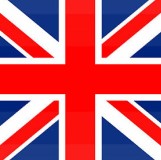Understanding Your French Energy Bill

It can be a bit hard to understand your energy bill, especially if you're not fluent in French (and even if you are!). Here's a guide to understanding energy bills in France.
Structure of an Energy Bill
You will see three main types of charges on your French energy bill:
- Monthly Subscription Charge (Abonnement): this is a fixed monthly amount that the energy supplier charges to cover the fixed costs of delivering energy (which are passed along to the delivery grid operator) and providing customer service. The subscription charge amount depends on the consumption class and the offer chosen. You can sometimes save on the subscription charge by signing up for a dual fuel plan.
- Consumption Charges (Consommation): the total amount depends on your monthly consumption and the rate you pay (per kWh) for your energy supply. The delivery grid operator measures your consumption once or twice a year, which forms the basis for the calculation of your monthly consumption
- Taxes (Contributions et taxes liées à l’énergie): taxes represent an important part of energy bills - especially for electricity! Even though some energy providers can offer a discount on the pre-tax regulated kWh, no provider can lower taxes applied to energy. Check our related articles to learn more about taxes applied to electricity and gas.
Understanding Energy Bills in France
To see what an energy bill from a specific supplier looks like (e.g. EDF, Direct Energie, etc), click here and select your provider & the energy (in French).
Understanding Your EDF Energy Bill

The front page of a bill from EDF contains the following information:
- The billing period ("Période du 06/01/20XX au 05/03/20XX").
- The energy type: Here, the customer has two contracts with EDF: electricity ("Electricité Tarif Bleu") and gas ("Gaz naturel Mon contrat gaz naturel"). On the same line is displayed the amount to pay for each energy (excluding VAT).
- Taxes: VAT (TVA) is listed on the last line. Noteworthy: VAT is applied to subscription charges, consumption charges and to energy-related taxes.
- On the right is displayed the amount due including taxes ("Total TTC"), and the automatic withdrawal date ("Prélevé le 20/03/20xx").

On the left-hand side of the front page of your EDF bill, you will find identifying information, including:
- The service address and name of the account holder
- The site ID: For electricity, this is called the PDL ("point de livraison"), and for gas it is called the PCE ("point de comptage et d'estimation"). Both are 14 digit numbers.
- The consumption class: For electricity this refers to the power capacity ("puissance du compteur"), in kVA or kW, and for natural gas you will find either "base", "B0", or "B1", depending on your annual consumption amount
- Rate option (here for electricity: "Heures pleines/Heures creuses")
The second page of your EDF bill outlines your consumption details and breaks down applicable taxes.
If you need help with understanding the technical terms on your French energy bill, this guide about energy bill translation of important terms from French to English will be able to help you out.
Understanding Your Engie (formerly GDF-Suez) Energy Bill

The second page of an Engie bill
The second page of your Engie bill contains important information about to your energy contract, including:
- Subscription charges: with and without VAT ("Total Abonnement").
- Consumption charges:with and without VAT ("Total Consommation").
- Taxes: again, with and without VAT ("Total contributions et taxes"). Keep in mind that VAT is also applied to the previous taxes.
- Total amount to be paid ("Total gaz naturel TTC").

The top of the second page of an Engie bill
- The service address and name of the account holder
- The site ID: For electricity, this is called the PDL ("point de livraison"), and for gas it is called the PCE ("point de comptage et d'estimation"). Both are 14 digit numbers.
- The consumption class ("puissance souscrite"), measured in kVA or kW (see #2)
- Annual gas consumption ("consommation annuelle de référence"), in kWh.
Understanding Your Total Direct Energie Energy Bill

The front page of a Total Direct Energie bill
Total Direct Energie's bills are generally to read than EDF or Engie's. All the relevant information is displayed on one single page:
- In the middle: the amount payable for your energy, excluding VAT. ("Total hors TVA")
- Below, the VAT amount ("TVA") and the total amount to be paid ("Total TTC").
- The collection date ("Montant prélevé le XX/XX/XXXX").
- The site ID ("Référence point de livraison"), (see #2).
Starting Energy Service or Switching Suppliers?Call our English-speaking advisors at 09 87 67 37 93, or ask for a free callback to subscribe to a competitive energy offer. (Monday to Friday 8.30am-8pm; Sat 9.30am-6pm)
| French Term | English Definition | French Term | English Definition |
|---|---|---|---|
| Abonnement | Subscription charge | Consommation | Consumption charge |
| Facture | Bill | Relevé | Meter reading |
| Consommation sur index estimé | Estimated consumtion | Total TTC (Toutes taxes comprises) | Total including taxes |
| Total hors TVA | Total without VAT | TVA | VAT |
| Prélevé le XX/XX/20XX | Automatic withdrawal date | Electricité Tarif Bleu | Regulated tariff for electricity |
| Point de livraison | Site ID for electricity | Point de comptage et d'estimation | Site ID for gas |
| Puissance (du compteur/souscrite) | Power capacity | Consommation annuelle de référence | Annual consumption |
Check out this other article to find out all the tips and tricks to lower your electricity bills!
 alt="energy in france" />
alt="energy in france" />
